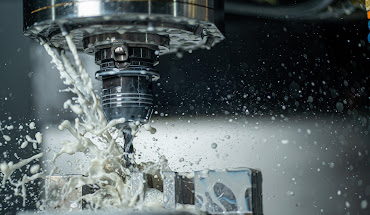Production of powders
• Metal powders =>
Main constituent of a P/M product; final properties of the finished P/M part depends on size, shape, and surface area of powder particles.
• Single powder production method is not sufficient for all applications
Powder production methods:
1. Mechanical methods,
2. Physical methods,
3. Chemical methods
1. Mechanical methods =>
cheapest of the powder production methods; These methods involve using mechanical forces such as compressive forces, shear or impact to facilitate particle size reduction of bulk materials; Eg.: Milling
Milling:
During milling, impact, attrition, shear and compression forces are acted upon particles. During impact, striking of one powder particle against another occurs. Attrition refers to the production of wear debris due to the rubbing action between two particles. Shear refers to cutting of particles resulting in fracture. The particles are broken into fine particles by squeezing action in compression force type.
Main objective of milling: Particle size reduction (main purpose), shape change, agglomeration (joining of particles together), solid state alloying, mechanical or solid state mixing, modification of material properties.
